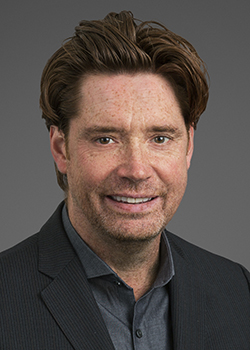Q&A: The Evolution of Green Design in Learning Environments
 For the past several years, providing a sustainable and productive environment for students to learn has become increasingly important and has caused design firms to create innovative and efficient facilities, while keeping student success in mind.
For the past several years, providing a sustainable and productive environment for students to learn has become increasingly important and has caused design firms to create innovative and efficient facilities, while keeping student success in mind.
Green Building News spoke with Mark McCarthy, AIA, LEED AP, principal and national design director at national architecture firm, KSQ Design, about the changes in school construction and the implementation of green design elements in the learning environment.
Q: How have you seen school construction evolve over the past several years?
McCarthy: I think that probably the biggest impact over the last few years has been a shift towards more project-based and more individualized learning, which means that the classrooms are much more like project spaces, so the spaces need to be a little bit bigger and there needs to be more flexibility in the way that we design the spaces. [This is] a move away from more of a lecture-based space or a space where students aren’t situated in desks in a row, but instead, situated in a much more active kind of space with the teacher moving around the room.
Q: Have there been any changes to standards such as LEED that you have designed to in the past years?
McCarthy: The awareness of the advantages of sustainability has become much greater in the past five years. It’s kind of a pre-requisite at this point. I don’t think we do any project, certainly not a school project, where that isn’t something that’s a goal for the client as well as us. It’s not always necessarily LEED because I think that a lot of the standards, whether they are New York City standards or Connecticut state standards, have their own checklist, but in many ways, there is a lot of overlap with the LEED system.
Q: Since there is a pre-requisite to become a sustainable facility, has it become any easier to become certified, or are firms creating green facilities and not seeking LEED certification?
McCarthy: I think that in a public school situation, it’s more about meeting state standards than it is LEED. So, Connecticut High Performance and the School Construction Authority in New York City have their own set of standards, but when we are working with independent schools or charter schools, I think they have a bit more leeway in how they approach sustainability. I think in independent schools LEED building is still the standard that most people go by. When working with charter schools, I think sometimes it’s more restrictive in terms of their budgets. So, they are interested in pursuing sustainable approaches because of the quality of the space with the light and the air for teaching the students and also for the efficiency of the building in terms of their cost of operating, but perhaps a little bit less so in pursuing the certificate for green building.
Q: Are there any projects that you are currently working on or have recently completed?
McCarthy: What I’m working on right now is actually a master plan for the Peck School in Morristown, N.J., which is an independent K-8 school. We are looking at a new performing arts building at the school. That is in the very early planning stages, but sustainability is certainly part of the mission. We are discussing the opportunities and advantages of going for LEED Gold. I think LEED Silver is almost the baseline for us, and I think it becomes [a matter of] whether or not we are going to go beyond it.
Q: You just recently began working with KSQ. How do your philosophies align with the company’s and what made this a positive career move for you?
McCarthy: For me, something that’s really essential to the mission at KSQ is the idea of creating community, so working really closely with the clients and users and all stakeholders to create places that foster community as well as the sense of community within the firm, and that really aligns with my own approach of having more of a team approach to design.
Q: Since you came from an education background as a middle school teacher, is working in school design and building better schools something that comes naturally for you?
McCarthy: Absolutely! I think for me — coming from a family of teachers, both my parents were public school teachers — I’ve always really admired and valued education. To be able to combine those values and those concerns with design is a passion and a perfect combination for me and is something that I feel very comfortable in having grown up in schools.
Q: Is there anything else you would like to add about your move to KSQ or any of the projects you have recently finished or are working on?
McCarthy: I just think it’s a really particularly exciting time to be working on school projects, because I think there is so much in the news and so much focus culturally about the importance of schools and the changing of schools that really feels like it’s become essential to everyone’s thinking. I think even the corporate and business world and the sciences are all looking at the approach to education at the early ages and the impact it has on children’s lives. It has really been fun to be a part of that.
